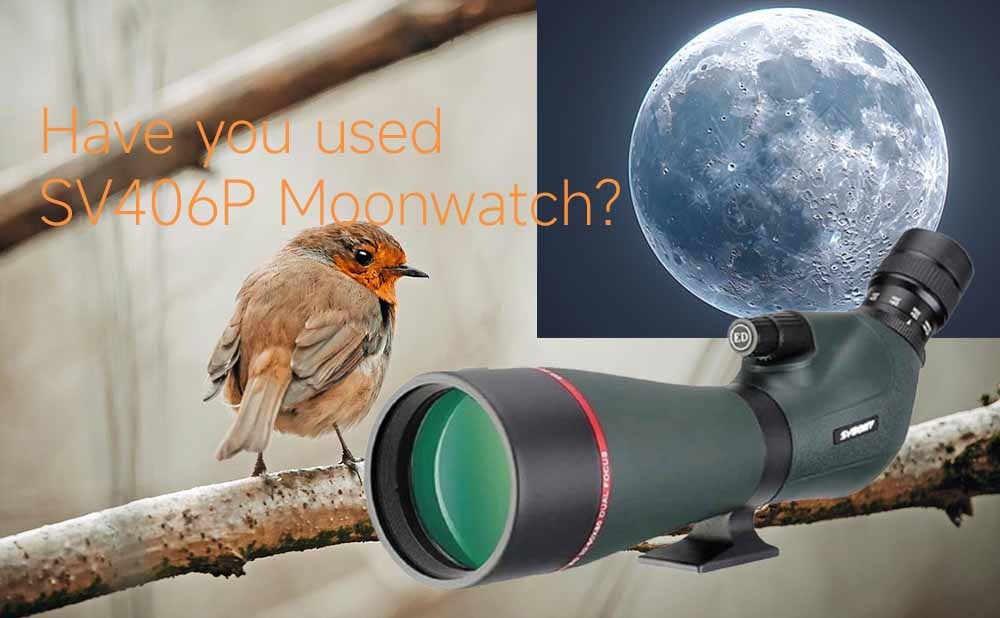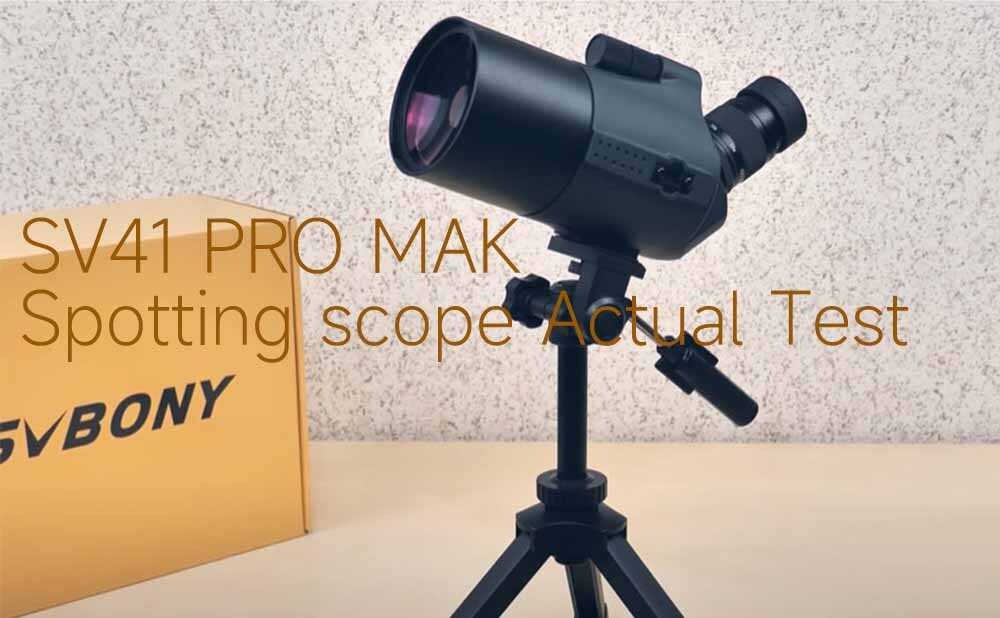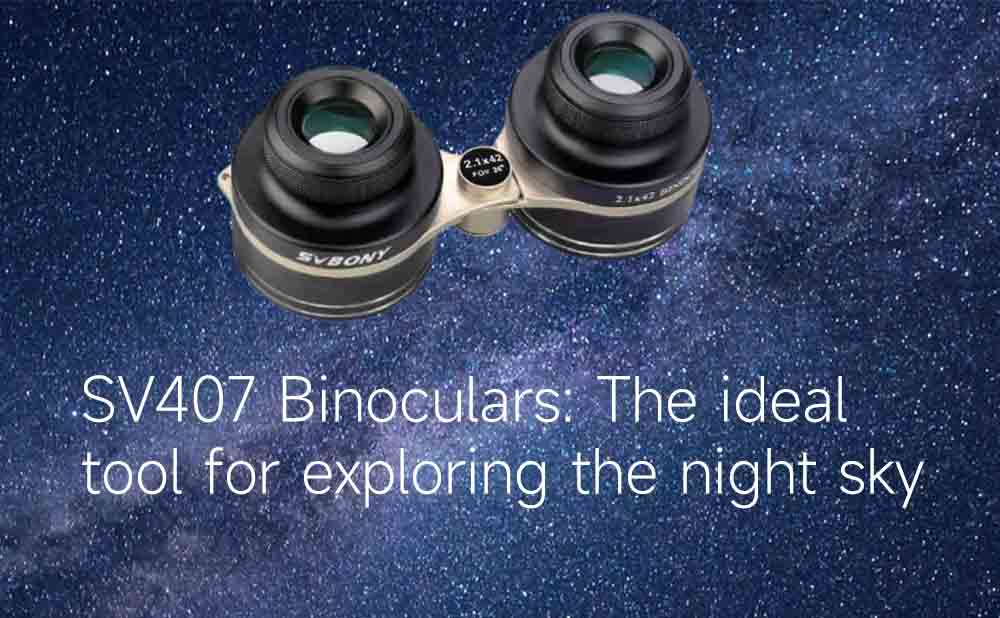What are you looking for?
SA405 ED 85mm Spotting Scope – Eyepiece Choices & Imaging Capabilities
SA405 ED 85mm Spotting Scope – Eyepiece Choices & Imaging Capabilities
- Posted by:Neil English
- 0 Comments

A Work Commenced May 26 2023
Preamble
In Part I of my review, I described the general optical and ergonomic features of the Svbony SA405 20x-60x 85mm ED spotting scope. In Part II I would like to reveal more about its ability to incorporate different eyepieces as well as its imaging capabilities.
The zoom eyepiece accompanying the SA405 is removed simply by rotating the rubber sleeve at the base of the eyepiece housing anticlockwise which loosens the grip on the zoom, allowing it to slide up and out of the ocular interface. The photo below shows the rectangular face of the Porro prism just beneath an anti-reflection-coated optical flat situated immediately above it, which effectively seals off the optics from the ambient environment.
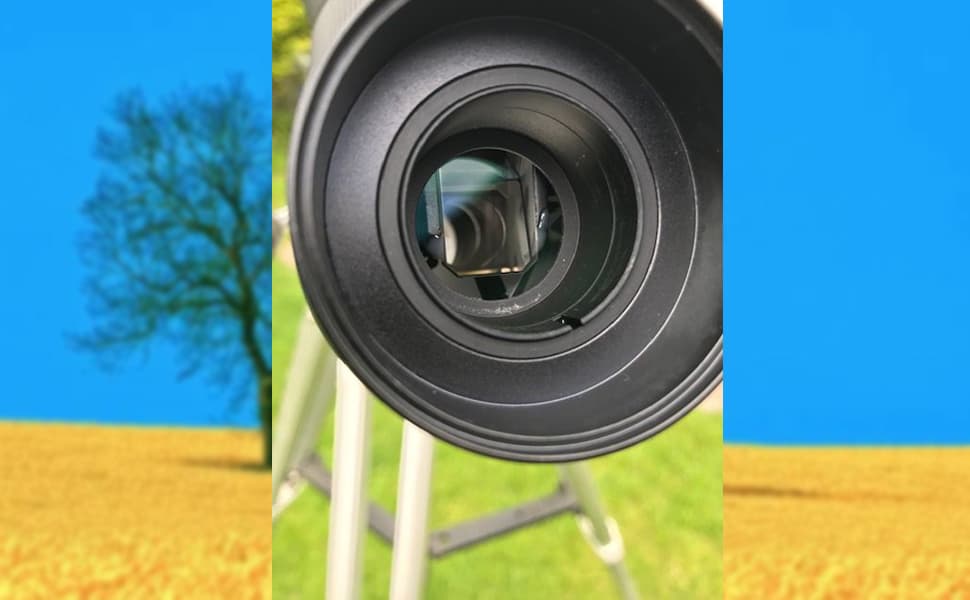 (The eyepiece interface of the SA405. Note the optical flat and prism edge.)
(The eyepiece interface of the SA405. Note the optical flat and prism edge.)
The nicely designed stops prevent any direct contact between the inserted eyepiece and the flat so there’s no chance of it cracking or scratching the glass. After inserting the new 1.25” eyepiece it can be tightened via a helical mechanism by rotating the rubber sleeve clockwise until its tightly fixed in place.
In the next series of photos, I‘ve attached a Sirius Plossl 7.5mm and a Celestron X-Cel 25mm- to the scope.
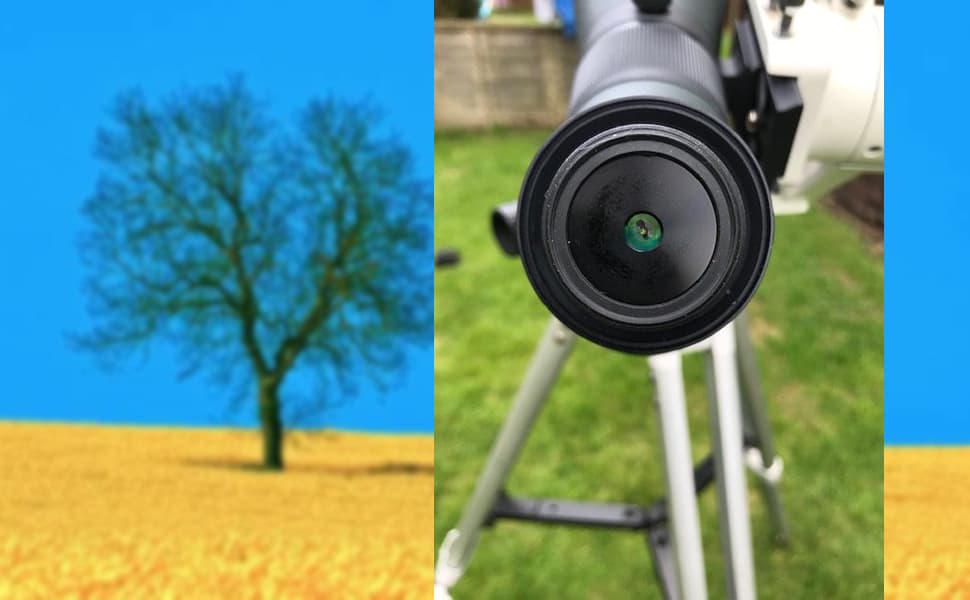
(The 7.5mm Sirius Plossl attached to the scope.)
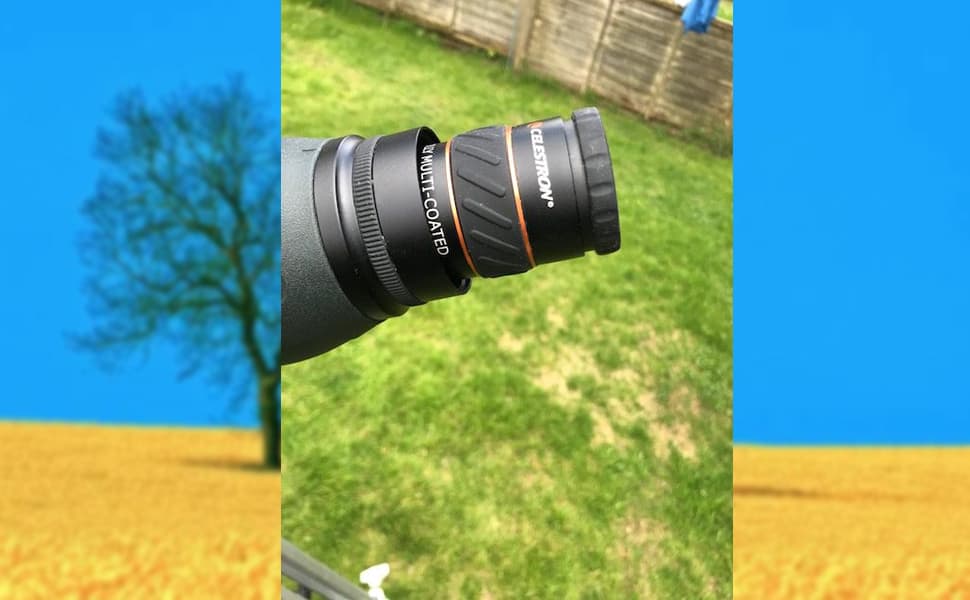
(The Celestron X-Cel LX 25mm inserted into the ocular interface.)
But by far the most versatile eyepiece I found for this scope is the Svbony SV 191 7.2-21.6mm zoom eyepiece offering a magnification range between 22.3x to 67x, so a modest gain in magnification over the original 20x- 60x. More on this zoom later.
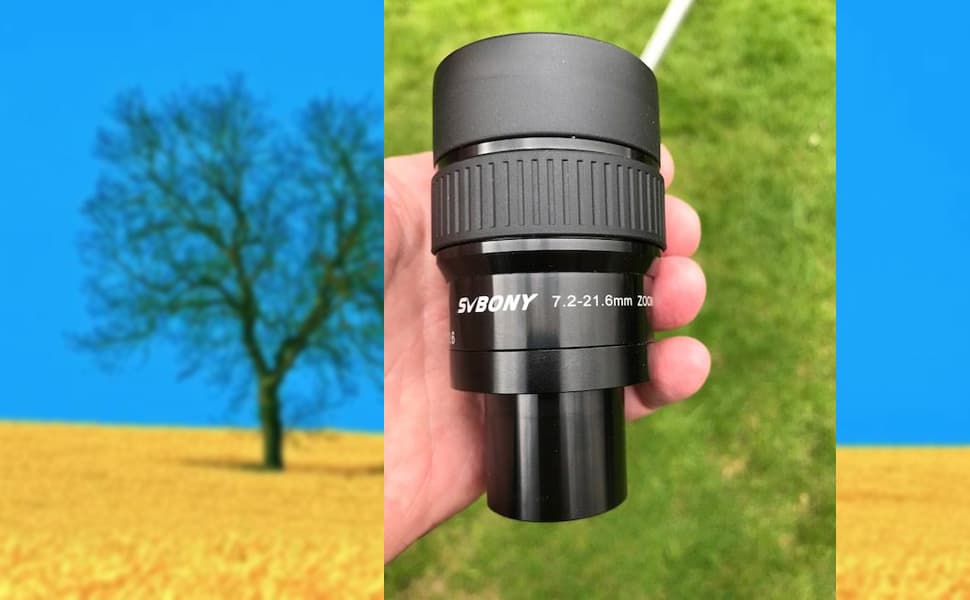
(The Svbony SV 191 7.2mm-21.6mm zoom eyepiece.)
Determining the Maximum Field of View Available to Ordinary Eyepieces using the SA405
The provided zoom serves up a maximum field of view of just under 2 angular degrees. I determined to establish whether I could expand this field by using fixed focal length eyepieces. In this capacity, I set up some experiments using both a Celestron X-Cel LX 25mm with a 60 degree AFOV. In theory this should have served up a true field of 3.1 angular degrees. In addition I tested a 32mm Skywatcher Plossl eyepiece which should serve up a field of 3.45 angular degrees(52 degrees AFOV). However, the effects of vignetting would likely come into play, restricting the true size of the fields generated by these long focal length eyepieces.
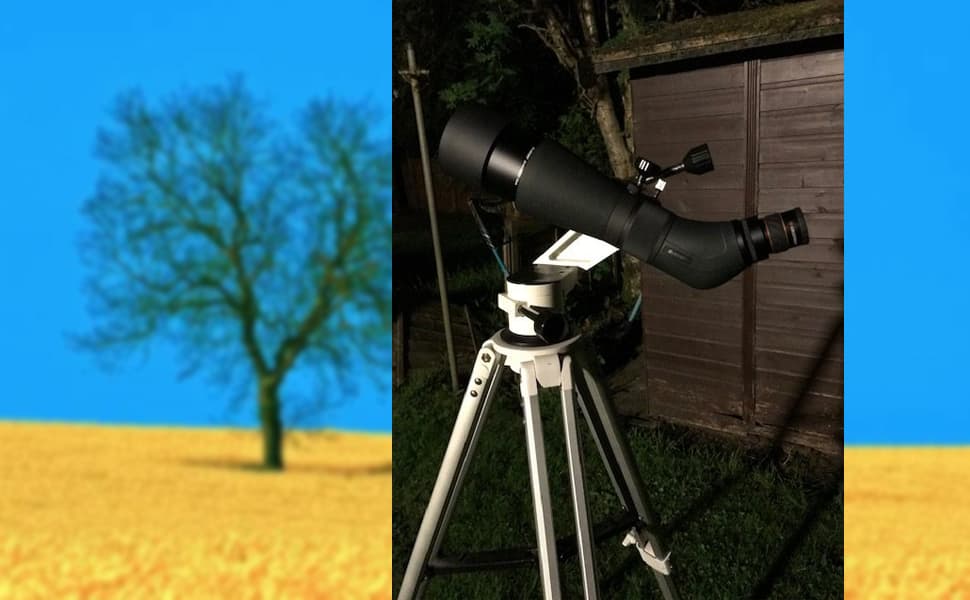
(Performing the star drift test on the SA405 to determine true field size.)
Accordingly, I measured the fields of these eyepieces by conducting a star drift timing test. In the wee small hours of a late May morning, under decidedly twilit conditions, I centred the bright star Altair with a declination of +8.87 degrees, so just above the celestial equator(well within the +/- 20 degrees required for accurate results), I timed how long it took for the star to reach the field stop and used these values to calculate the true field( times were actually doubled). The results I got were as follows:
25mm Celestron X-Cel LX – 3.05 degrees
32mm Skywatcher Plossl- 2.93 degrees
Comments: The Celestron eyepiece served up a field size in good agreement with its specifications. The Skywatcher, as expected, vignetted the field, delivering a field size pretty much indistinguishable from the shorter focal length Celestron. Since there is no material advantage to having a lower magnification with the same field size, the Celestron is the better eyepiece for dedicated low-power widefield viewing.
Experiences with the Svbony SV 191 7.2-21.6mm Zoom Eyepiece
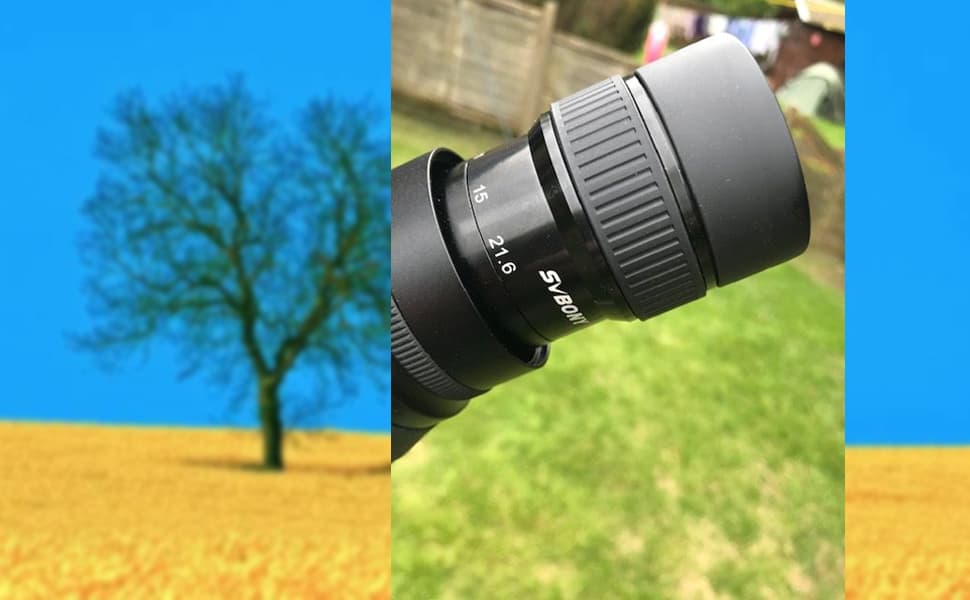
(The excellent SV 191 7.2-21.6mm zoom eyepiece mated to the SA405 spotting scope.)
The SV 191 7.2-21.6mm zoom is a very nicely designed eyepiece. The zoom motion is extremely smooth and continuously variable. It has twist up eyecups with excellent eye relief. Unlike the 20x-60x zoom that comes as standard with the SA405, the SV 191 can be used comfortably with eyeglasses throughout the entire magnification range. Another really neat feature of this zoom eyepiece is that it’s parfocal – or very nearly so. That means that only very minor tweaking is necessary if you decide to change magnification. Moreover, the SV 191 zoom tips the scales about 100g lighter than the supplied zoom, reducing the overall weight of the scope – surely a good thing when portability is to be considered.
Optically it’s very nice too. The image remains tack sharp all the way through the full magnification range. Contrast is very impressive with accurate colours coming through. The SA405 remains very well corrected for false colour using this eyepiece, as the image below illustrates.
On the evening of May 27, I took a simple handheld shot of the first quarter Moon at the 67x setting through my iphone7. I hope you’ll agree the image generated shows excellent details along the terminator with the magnificent Apennine Mountain range visible near the top of the image.
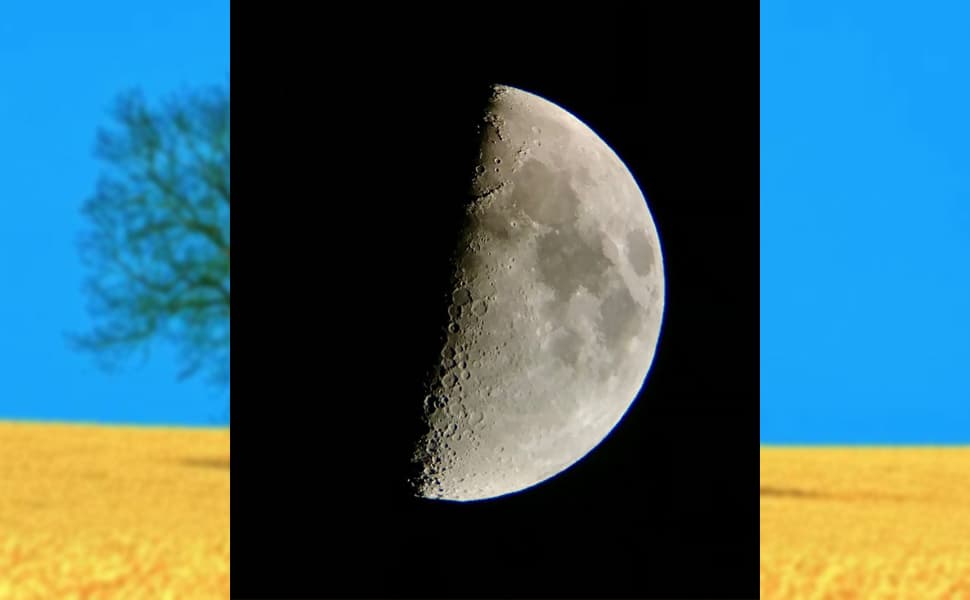
(The first quarter Moon at 67x through the SA405 using the SV 191 zoom eyepiece. May 27 2023 at 11.20pm local time.)
Zoom eyepieces have really come along way over the last decade or so. Having owned and enjoyed the Baader 8-24mm Hyperion zoom for astronomical applications, this nifty Svbony eyepiece delivers equally good images in my opinion but at a fraction of the former’s retail price. I picked this up for £58.99 on Amazon UK.
I took the opportunity to do some more star testing with this new eyepiece, taking advantage of its higher maximum power over the supplied zoom. Conducting several tests over a few nights of good, stable seeing, I’m confident to declare that its figure is a solid 1/6 wave P-V under-correction; an excellent result.
The SV 191 also afforded an excellent opportunity to see the effects of boosting magnification while observing a star field.
Starting at the 21.6mm setting, the sky is quite bright with only the brighter stars being visible. Racking the magnification upward allowed me to immediately see much fainter stars in the same field, as the sky became progressively darker; an easy and compelling way to see the dramatic effects of magnifying power on a telescopic image.
Higher Power Experiments and the Grey Heron that Came to Nest
Using the Svbony SC001 Imaging Camera
Conclusions & Recommendations
For more interesting content, please refer directly to Neil English.net.
Thank you for reading.Welcome to comment.


